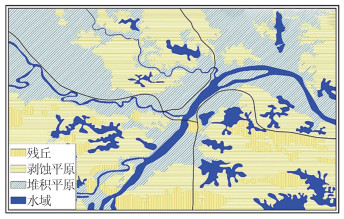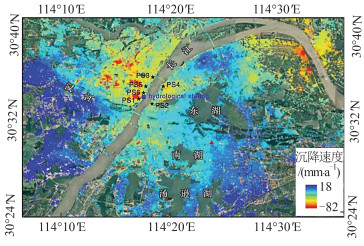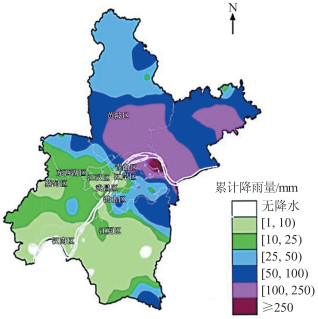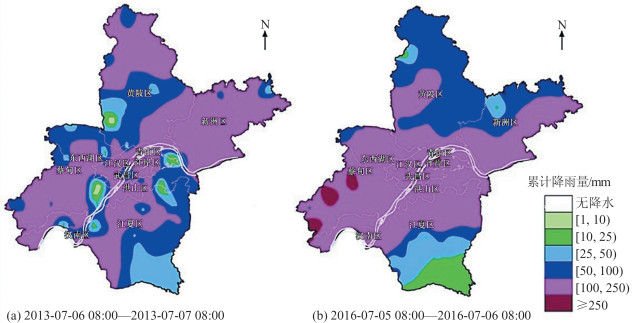Detection of the Urban Surface Deformation and New Strategy for Flood Prevention in Wuhan Central District
-
摘要: 武汉市2013年和2016年的城市洪涝暴露了城市基础设施应对洪涝灾害的严重不足。水面锐减导致传统的抽排模式受到越来越大的挑战。如果利用土壤的水容能力,既可以资源化雨洪利用,又能改善土壤圈生态,将是一种新的城市防洪方向,为此,查明城市地表形变规律和土壤非饱和信息至关重要。基于2015-04—2016-04 InSAR (interferometric synthetic aperture radar)数据和110个基准点信息,获得武汉市中心城区的地面沉降数据,与长江水面进行对比分析,研究水面变化与地表形变的相关性。研究发现,武汉市中心城区的地面上升达到18 mm/a,主要是土壤水的物理化学膨胀作用,指示了土壤的不饱和状态,其潜在的防洪能力远大于其他方法。另外,城市地面上升呈现带状分布,也指示了雨水的径流方向。Abstract:Objectives The urban floods occurred in 2013 and 2016 exposed the serious shortages of Wuhan infrastructures to resist weathering disasters. Traditional drainage of Wuhan against urban flood enfaces the challenges due to the sharp decrease of water area. A large amount of rainwater flows into the Yangtze River, aggravating the downstream flood.Methods A new strategy is proposed to control the urban rainwater by using the "thirsty" soil to absorb rainwater. The expansion of soil moisture characterizes the water absorption capacity of soil. In principle, the saturated soil expanses and raises ground surface; on the contrary, the thirsty soil shrinks in volume and results into ground subsidence. It becomes a better strategy to control urban flood by utilizing this absorption capacity of thirsty soil, not only transforming the rainwater disaster into water resources, but also improving the ecology of urban pedosphere. The natural fluctuation of urban ground deformation is measured to roughly estimate the potential capability of water absorption. We took use of InSAR (interferometric synthetic aperture radar) data and 110 datum points in Wuhan center to inverse the surface deformation during the temporal window of 2015-04 to 2016-04.Results The measured results demonstrated that the uplift of Wuhan urban area reached 18 mm/a. The current drainage capacity of Wuhan is equivalent to 140 mm/d rainfall, the water capacity of lakes is 250 mm/d rainfall, and the flood resistance capacity of soil sponge is only 30 mm rainfall. If soil's water absorption capacity is fully utilized, the soil sponge of 10 m soil layer can absorb 4 500 mm/d rainfall.Conclusions The uplift of the urban land surface was caused by physical and chemical expansions of soil water; its potential capacity of flood control is much bigger than other methods. In addition, the zonings of surface rise indicate the runoff directions of the groundwater.
-
Keywords:
- urban flood /
- InSAR /
- surface deformation /
- land uplift /
- land subsidence
-
-
表 1 武汉市中心城区近30年湖泊面积变化
Table 1 Changes of Lake Areas in Wuhan Central District During 30 Years
统计年份/年 湖泊面积/km2 沙湖面积/km2 南湖面积/km2 1987 152.2 8.3 15.4 1994 154.4 7.4 14.4 2001 137.7 4.5 12.8 2005 114.5 3.1 8.2 2009 88.1 2.5 7.7 2013 81.0 2.5 7.4 2016 81.0 2.3 7.1 表 2 武汉市60年湖泊防洪能力对比
Table 2 Comparison of Flood Control Capacity of Wuhan Lakes During 60 Years
时间 湖泊数/个 池塘数/个 水面占比 抗洪能力/mm 60年前 500 10 000+ 50%+ 500 2020年 189 6 000- 25.8% 258 注:"+"为超出,"-"为不足 -
[1] 肖和平. 城市地质灾害及对策[J]. 灾害学, 2000, 15(2) : 39-43 doi: 10.3969/j.issn.1004-4574.2000.02.006 Xiao Heping. Urban Geological Disaster and Counter Measures[J]. Journal of Catastropholog, 2000, 15(2): 39-43 doi: 10.3969/j.issn.1004-4574.2000.02.006
[2] Fedeski M, Gwilliam J. Urban Sustainability in the Presence of Flood and Geological Hazards: The Development of a GIS-Based Vulnerability and Risk Assessment Methodology[J]. Landscape and Urban Planning, 2007, 83(1): 50-61 doi: 10.1016/j.landurbplan.2007.05.012
[3] 邹俊, 李树平. 2012年国内媒体报道城市暴雨事件分析[J]. 中国公共安全(学术版), 2013(2): 23-29 doi: 10.3969/j.issn.1672-2396.2013.02.006 Zou Jun, Li Shuping. Analysis of Chinese Media Reports on Urban Storm Events in 2012[J]. China Public Security (Academy Edition), 2013(2): 23-29 doi: 10.3969/j.issn.1672-2396.2013.02.006
[4] 吴玉成. 我国城市内涝灾害频发原因分析[J]. 中国防汛抗旱, 2011, 21(6): 7-8, 15 https://www.cnki.com.cn/Article/CJFDTOTAL-FHKH201106005.htm Wu Yucheng. Analysis on the Causes of Frequent Occurrence of Urban Waterlogging in China[J]. China Flood & Drought Management, 2011, 21(6): 7-8, 15 https://www.cnki.com.cn/Article/CJFDTOTAL-FHKH201106005.htm
[5] 项久华, 王亮. 湖北武汉市应对城市内涝灾害探讨[J]. 中国防汛抗旱, 2013, 23(1): 24-27, 34 doi: 10.3969/j.issn.1673-9264.2013.01.013 Xiang Jiuhua, Wang Liang. Discussion on Coping with Urban Waterlogging Disaster in Wuhan, Hubei Province[J]. China Flood & Drought Management, 2013, 23(1): 24-27, 34 doi: 10.3969/j.issn.1673-9264.2013.01.013
[6] 张媛, 张琍, 陈楠, 等. 基于湖北省12个中小型湖泊的水环境遥感监测应用示范[J]. 中国环境监测, 2017, 33(1): 131-136 https://www.cnki.com.cn/Article/CJFDTOTAL-IAOB201701025.htm Zhang Yuan, Zhang Li, Chen Nan, et al. Application Demonstration of Water Environment Remote Sensing Monitoring for Small to Medium-Sized Lakes in Hubei Province[J]. Environmental Monitoring in China, 2017, 33(1): 131-136 https://www.cnki.com.cn/Article/CJFDTOTAL-IAOB201701025.htm
[7] 喻晓娟. 基于Landsat影像的1987—2016年武汉市湖泊面积动态变化分析[D]. 南昌: 东华理工大学, 2018 Yu Xiaojuan. Analysis of Dynamic Change of Lake Area in Wuhan City from 1987 to 2016 Based on Landsat Image[D]. Nanchang: East China University of Technology, 2018
[8] 陈基炜. 新技术在城市地面沉降研究中的应用——遥感卫星雷达干涉测量(InSAR)[J]. 上海地质, 2001(2): 45-50 doi: 10.3969/j.issn.2095-1329.2001.02.012 Chen Jiwei. Urban Subsidence Monitoring by Using the New Technology of Spaceborne Interferometric SAR[J]. Shanghai Geology, 2001(2): 45-50 doi: 10.3969/j.issn.2095-1329.2001.02.012
[9] 段光耀. 城市建筑容积率提取及其与地面沉降关系分析[D]. 北京: 首都师范大学, 2012 Duan Guangyao. Extraction of Urban Building Plot Ratio and Analysis of Its Relationship with Land Subsidence[D]. Beijing: Capital Normal University, 2012
[10] Liu L, Schaefer K M, Chen A C, et al. Remote Sensing Measurements of Thermokarst Subsidence Using InSAR[J]. Journal of Geophysical Research: Earth Surface, 2015, 120(9): 1 935-1 948 doi: 10.1002/2015JF003599
[11] 张永红, 刘冰, 吴宏安, 等. 雄安新区2012—2016年地面沉降InSAR监测[J]. 地球科学与环境学报, 2018, 40(5): 652-662 doi: 10.3969/j.issn.1672-6561.2018.05.013 Zhang Yonghong, Liu Bing, Wu Hong'an, et al. Ground Subsidence in Xiong'an New Area from 2012 to 2016 Monitored by InSAR Technique[J]. Journal of Earth Sciences and Environment, 2018, 40(5): 652-662 doi: 10.3969/j.issn.1672-6561.2018.05.013
[12] 赖绍聪, 张国伟, 董云鹏. 秦岭-大别勉略缝合带湖北随州周家湾变质玄武岩地球化学及其大地构造意义[J]. 矿物岩石, 1998, 18(2): 2-9 https://www.cnki.com.cn/Article/CJFDTOTAL-KWYS802.000.htm Lai Shaocong, Zhang Guowei, Dong Yunpeng. Geochemical Features and Its Tectonic Significance of the Meta-Basalt in Zhoujiawan Area, Mianlue Suture Zone, Qinling- Dabie Mountains, Hubei Province[J]. Jmineral Petrol, 1998, 18(2): 2-9 https://www.cnki.com.cn/Article/CJFDTOTAL-KWYS802.000.htm
[13] 李亚林, 李三忠, 张国伟. 秦岭勉略缝合带组成与古洋盆演化[J]. 中国地质, 2002, 29(2): 129-134 doi: 10.3969/j.issn.1000-3657.2002.02.004 Li Yalin, Li Sanzhong, Zhang Guowei. Composition of the Mianlue Suture and Its Relation with the Evolution of the Old Oceanic Basin[J]. Geology in China, 2002, 29(2): 129-134 doi: 10.3969/j.issn.1000-3657.2002.02.004
[14] 陈虹, 胡健民, 武国利, 等. 西秦岭勉略带陆内构造变形研究[J]. 岩石学报, 2010, 26(4): 1 277-1 288 https://www.cnki.com.cn/Article/CJFDTOTAL-YSXB201004023.htm Chen Hong, Hu Jianmin, Wu Guoli, et al. Study on the Intracontinental Deformation of the Mianlue Suture Belt, Western Qinling[J]. Acta Petrologica Sinica, 2010, 26(4): 1 277-1 288 https://www.cnki.com.cn/Article/CJFDTOTAL-YSXB201004023.htm
[15] 李义天, 倪晋仁. 泥沙输移对长江中游水位抬升的影响[J]. 应用基础与工程科学学报, 1998, 6(3): 5-11 https://www.cnki.com.cn/Article/CJFDTOTAL-YJGX803.000.htm Li Yitian, Ni Jinren. Influence of Sediment Transort to Water Level Elevating in the Middle Reach of Yangtze River[J]. Journal of Basic Science and Engineering, 1998, 6(3): 5-11 https://www.cnki.com.cn/Article/CJFDTOTAL-YJGX803.000.htm
[16] 冯晓腊, 陈加红, 黄靖贤. 软土地基施工期稳定性评价方法的探讨[J]. 水文地质工程地质, 1992, 19(2): 18-20, 29 https://www.cnki.com.cn/Article/CJFDTOTAL-SWDG199202007.htm Feng Xiaola, Chen Jiahong, Huang Jingxian. On the Evaluation Method of Soft Soil Foundation Stability During Construction[J]. Hydrogeology & Engineering Geology, 1992, 19(2): 18-20, 29 https://www.cnki.com.cn/Article/CJFDTOTAL-SWDG199202007.htm
[17] 孙晓英, 冯晓腊, 徐升. 武汉中心深基坑工程坑中坑稳定性分析[J]. 土工基础, 2013, 27(1): 17-20 https://www.cnki.com.cn/Article/CJFDTOTAL-TGJC201301005.htm Sun Xiaoying, Feng Xiaola, Xu Sheng. Stability Evaluation of the Nested Deep Excavations for Wuhan-Centre Foundation[J]. Soil Engineering and Foundation, 2013, 27(1): 17-20 https://www.cnki.com.cn/Article/CJFDTOTAL-TGJC201301005.htm
[18] Zhou L, Guo J, Hu J, et al. Wuhan Surface Subsidence Analysis in 2015—2016 Based on Sentinel-1A Data by SBAS-InSAR[J]. Remote Sensing, 2017, 9(10): 1-21 http://www.ingentaconnect.com/content/doaj/20724292/2017/00000009/00000010/art00012
[19] Chen C T, Hu J C, Lu C Y, et al. Thirty-Year Land Elevation Change from Subsidence to Uplift Following the Termination of Groundwater Pumping and Its Geological Implications in the Metropolitan Taipei Basin, Northern Taiwan[J]. Engineering Geology, 2007, 95(1): 30-47 http://www.sciencedirect.com/science/article/pii/S0013795207001688
[20] Aldiss D, Burke H, Chacksfield B, et al. Geological Interpretation of Current Subsidence and Uplift in the London Area, UK, as Shown by High Precision Satellite-Based Surveying[J]. Proceedings of the Geologists Association, 2014, 125(1): 1-13 http://www.sciencedirect.com/science/article/pii/S0016787813000655
[21] Luo Q L, Perissin D, Zhang Y, et al. L- and X-Band Multi-temporal InSAR Analysis of Tianjin Subsidence[J]. Remote Sensing, 2014, 6: 7 933-7 951 http://adsabs.harvard.edu/abs/2014RemS....6.7933L
[22] Zhang Y, Wu H, Kang Y, et al. Ground Subsidence in the Beijing-Tianjin-Hebei Region from 1992 to 2014 Revealed by Multiple SAR Stacks[J]. Remote Sensing, 2016, 8: 675 http://adsabs.harvard.edu/abs/2016RemS....8..675Z
[23] 杨达源. 近五千年来长江中下游干流的演变[J]. 南京大学学报(自然科学版), 1989, 25(3): 167-173 https://www.cnki.com.cn/Article/CJFDTOTAL-NJDZ198903023.htm Yang Dayuan. The Evolution of the Mid-Lower Changjiang River in the Last 5 000 Years[J]. Journal of Nanjing University (Natural Sciences Edition), 1989, 25(3): 167-173 https://www.cnki.com.cn/Article/CJFDTOTAL-NJDZ198903023.htm
[24] 殷鸿福, 陈国金, 李长安, 等. 长江中游的泥沙淤积问题[J]. 中国科学(D辑: 地球科学), 2004, 34(3): 195-209 https://www.cnki.com.cn/Article/CJFDTOTAL-JDXK200403000.htm Yin Hongfu, Chen Guojin, Li Chang'an, et al. Sedimentation in the Middle Reaches of the Yangtze River[J]. Science in China (Series D: Earth Sciences), 2004, 34(3): 195-209 https://www.cnki.com.cn/Article/CJFDTOTAL-JDXK200403000.htm
[25] 李义天, 孙昭华, 邓金运, 等. 泥沙输移变化与长江中游水患[J]. 泥沙研究, 2004(2): 33-39 https://www.cnki.com.cn/Article/CJFDTOTAL-NSYJ200402005.htm Li Yitian, Sun Zhaohua, Deng Jinyun, et al. Variation of Sediment Transport and Flood Disaster in the Middle Reach of Yangtze River[J]. Journal of Sediment Research, 2004(2): 33-39 https://www.cnki.com.cn/Article/CJFDTOTAL-NSYJ200402005.htm
[26] 马建威, 黄诗峰, 许宗男. 基于遥感的1973—2015年武汉市湖泊水域面积动态监测与分析研究[J]. 水利学报, 2017, 48(8): 903-913 https://www.cnki.com.cn/Article/CJFDTOTAL-SLXB201708003.htm Ma Jianwei, Huang Shifeng, Xu Zongnan. Satellite Remote Sensing of Lake Area in Wuhan from 1973 to 2015[J]. Journal of Hydraulic Engineering, 2017, 48(8): 903-913 https://www.cnki.com.cn/Article/CJFDTOTAL-SLXB201708003.htm
[27] 张毅, 孔祥德, 邓宏兵, 等. 近百年湖北省湖泊演变特征研究[J]. 湿地科学, 2010, 8(1): 15-20 https://www.cnki.com.cn/Article/CJFDTOTAL-KXSD201001004.htm Zhang Yi, Kong Xiangde, Deng Hongbing, et al. Change Characteristic of Lakes in Hubei Province in the Past 100 Years[J]. Wetland Science, 2010, 8(1): 15-20 https://www.cnki.com.cn/Article/CJFDTOTAL-KXSD201001004.htm
[28] Allbrook R F. Shrinkage of Some New Zealand Soils and Its Implications for Physics[J]. Aust J Soil Res, 1992, 3: 111-118 http://www.publish.csiro.au/sr/SR9930111
[29] Yong R N, Warkentin B P. Soil Properties and Behavior[M]. Amsterdam: Elsevier Scientific, 1975
[30] 杨绍锷, 黄元仿. 关于土壤收缩特征曲线的探讨[J]. 土壤通报, 2007, 38(4): 749-752 https://www.cnki.com.cn/Article/CJFDTOTAL-TRTB200704028.htm Yang Shaoe, Huang Yuanfang. Discussion on Soil Shrinkage Characteristic Curves[J]. Chinese Journal of Soil Science, 2007, 38(4): 749-752 https://www.cnki.com.cn/Article/CJFDTOTAL-TRTB200704028.htm
[31] Mitchell A R, van Genuchten M Th. Shrinkage of Bare and Cultivated Soil[J]. Soil Sci Soc Am J, 1992, 56: 1 036-1 042 doi: 10.2136/sssaj1992.03615995005600040006x
[32] 黄传琴, 邵明安. 干湿交替过程中土壤胀缩特征的实验研究[J]. 土壤通报, 2008, 39(6): 1 243-1 247 https://www.cnki.com.cn/Article/CJFDTOTAL-TRTB200806005.htm Huang Chuanqin, Shao Ming'an. Experimental Study on Soil Shrinking and Swelling Characteristics During the Alternative Drying and Wetting Processes[J]. Chinese Journal of Soil Science, 2008, 39(6): 1 243-1 247 https://www.cnki.com.cn/Article/CJFDTOTAL-TRTB200806005.htm
[33] Bronswijk J J B. Shrinkage Geometry of a Heavy Clay Soil at Various Stresses[J]. Soil Sci Soc Am J, 1990, 54: 1 500-1 502 doi: 10.2136/sssaj1990.03615995005400050048x
[34] 张先伟, 王常明, 李军霞. 软土固结蠕变特性及机制研究[J]. 岩土力学, 2011, 32(12): 3 584-3 590 https://www.cnki.com.cn/Article/CJFDTOTAL-YTLX201112008.htm Zhang Xianwei, Wang Changming, Li Junxia. Experimental Study of Coupling Behaviors of Consolidation-Creep of Soft Clay and Its Mechanism[J]. Rock and Soil Mechanics, 2011, 32(12): 3 584-3 590 https://www.cnki.com.cn/Article/CJFDTOTAL-YTLX201112008.htm
[35] 乔胜英, 蒋敬业, 向武, 等. 武汉地区湖泊沉积物重金属的分布及潜在生态效应评价[J]. 长江流域资源与环境, 2005, 14(3): 353-357 https://www.cnki.com.cn/Article/CJFDTOTAL-CJLY200503017.htm Qiao Shengying, Jiang Jingye, Xiang Wu, et al. Distribution of Heavy Metals in Sediments in Lakes in Wuhan with Assessment on Their Potential Ecological Risk[J]. Resources and Environment in the Yangtze Basin, 2005, 14(3): 353-357 https://www.cnki.com.cn/Article/CJFDTOTAL-CJLY200503017.htm
[36] 杨汉东, 农生文, 蔡述明, 等. 武汉东湖沉积物的环境地球化学[J]. 水生生物学报, 1994, 18(3): 208-214 https://www.cnki.com.cn/Article/CJFDTOTAL-SSWX403.001.htm Yang Handong, Nong Shengwen, Cai Shuming, et al. Environmental Geochemistry of Sediments in Lake Donghu, Wuhan[J]. Acta Hydrobiologica Sinica, 1994, 18(3): 208-214 https://www.cnki.com.cn/Article/CJFDTOTAL-SSWX403.001.htm
[37] 祁海霞, 辜旭赞, 白永清等. 2013年湖北一次大暴雨β中尺度分析和模拟诊断[J]. 气象, 2017, 43(3): 268-277 https://www.cnki.com.cn/Article/CJFDTOTAL-QXXX201703002.htm Qi Haixia, Gu Xuzan, Bai Yongqing, et al. Simulation and Diagnosis of the Evolution Characteristics of a Meso-β Scale Heavy Rainstorm Event in Hubei in 2013[J]. Meteorology Monthly 2017, 43(3): 268-277 https://www.cnki.com.cn/Article/CJFDTOTAL-QXXX201703002.htm
[38] 施绪武, 闸东山. 抢救武汉湖泊的思考[J]. 中国水利, 2005(7): 61-63 https://www.cnki.com.cn/Article/CJFDTOTAL-SLZG200507020.htm Shi Xuwu, Zha Dongshan. Considerations on Saving Lakes in Wuhan[J]. China Water Resources, 2005(7): 61-63 https://www.cnki.com.cn/Article/CJFDTOTAL-SLZG200507020.htm
[39] 钱正英. 对1998年长江洪水的一些认识[J]. 科技导报, 1998(12): 4-7 https://www.cnki.com.cn/Article/CJFDTOTAL-KJDB199812003.htm Qian Zhengying. Viewpoints on the Flood of the Changjiang River in 1998[J]. Science & Technology Review, 1998(12): 4-7 https://www.cnki.com.cn/Article/CJFDTOTAL-KJDB199812003.htm
[40] 周耕. 武汉市沙湖地区排水工程优化运行研究[D]. 武汉: 武汉大学, 2004 Zhou Geng. Study on Draining System for Optimizing Operation of Shahu Lake in Wuhan[D]. Wuhan: Wuhan University, 2004
[41] 贾绍凤. 关于武汉市发挥湖泊调蓄优势防治内涝的建议[J]. 中国水利, 2017(7): 36-37 https://www.cnki.com.cn/Article/CJFDTOTAL-SLZG201707014.htm Jia Shaofeng. Suggestions on Giving Full Play to the Advantages of Lake Regulation and Storage to Prevent Waterlogging in Wuhan[J]. China Water Resources, 2017(7): 36-37 https://www.cnki.com.cn/Article/CJFDTOTAL-SLZG201707014.htm
[42] 张毅, 邓宏兵. 武汉市城市湖泊演化及开发利用初探[J]. 华中师范大学学报(自然科学版), 2005, 39(4): 559-563 https://www.cnki.com.cn/Article/CJFDTOTAL-HZSZ200504033.htm Zhang Yi, Deng Hongbing. Discussion of the Evolution and Use of the Lakes in Wuhan[J]. Journal of Central China Normal University (Natural Sciences), 2005, 39(4): 559-563 https://www.cnki.com.cn/Article/CJFDTOTAL-HZSZ200504033.htm
[43] 国家防办课题调研组. 洪水资源化调研报告[J]. 中国防汛抗旱, 2004(2): 10-14 https://www.cnki.com.cn/Article/CJFDTOTAL-FHKH200402003.htm Research Group of National Defense Office. Flood Resource Investigation Report[J]. China Flood & Drought Management, 2004(2): 10-14 https://www.cnki.com.cn/Article/CJFDTOTAL-FHKH200402003.htm
[44] 尚志海, 万方秋, 丘世钧. 城市洪水资源化研究[J]. 水利经济, 2006, 24(5): 7-8, 14 https://www.cnki.com.cn/Article/CJFDTOTAL-SLJJ200605002.htm Shang Zhihai, Wan Fangqiu, Qiu Shijun. Study on Utilization of Urban Floods[J]. Journal of Economics of Water Resources, 2006, 24(5): 7-8, 14 https://www.cnki.com.cn/Article/CJFDTOTAL-SLJJ200605002.htm
[45] 向立云. 洪水资源化: 概念、途径与策略[J]. 中国三峡, 2013(5): 18-23 https://www.cnki.com.cn/Article/CJFDTOTAL-SJXS201305004.htm Xiang Liyun. Flood Utilization: Concept, Approach and Strategy[J]. China Three Gorges, 2013(5): 18-23 https://www.cnki.com.cn/Article/CJFDTOTAL-SJXS201305004.htm
[46] 霍树萍. 对洪水资源化的探讨[J]. 内蒙古水利, 2014(4): 145-146 https://www.cnki.com.cn/Article/CJFDTOTAL-NMSL201404081.htm Huo Shuping. Discussion on Flood Utilization[J]. Inner Mongolia Water Resources, 2014(4): 145-146 https://www.cnki.com.cn/Article/CJFDTOTAL-NMSL201404081.htm
[47] 齐永才. 变化环境下的洪水资源化研究评述[J]. 治淮, 2015(6): 11-12 https://www.cnki.com.cn/Article/CJFDTOTAL-ZIHU201506006.htm Qi Yongcai. Review of Flood Resources Research Under Changing Environment[J]. Harnessing the Huaihe River, 2015(6): 11-12 https://www.cnki.com.cn/Article/CJFDTOTAL-ZIHU201506006.htm
[48] 谢萍, 张双喜, 汪海洪, 等. 利用交叉小波技术分析三峡水库蓄排水过程对库区降雨量的影响[J]. 武汉大学学报·信息科学版, 2019, 44(6): 821-829, 907 doi: 10.13203/j.whugis20180410 Xie Ping, Zhang Shuangxi, Wang Haihong, et al. Cross Wavelet Analysis on the Influence of the Three Gorges Dam Impounding on the Reservoir Precipitation[J]. Geomatics and Information Science of Wuhan University, 2019, 44(6): 821-829, 907 doi: 10.13203/j.whugis20180410





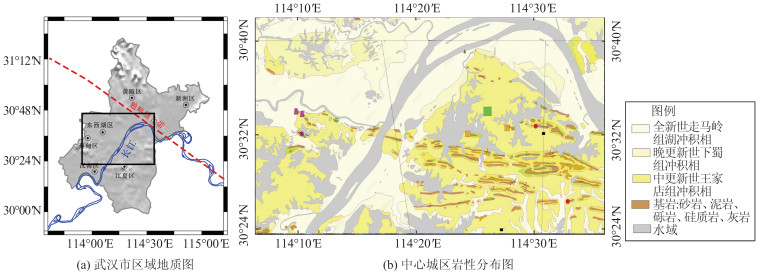
 下载:
下载:
